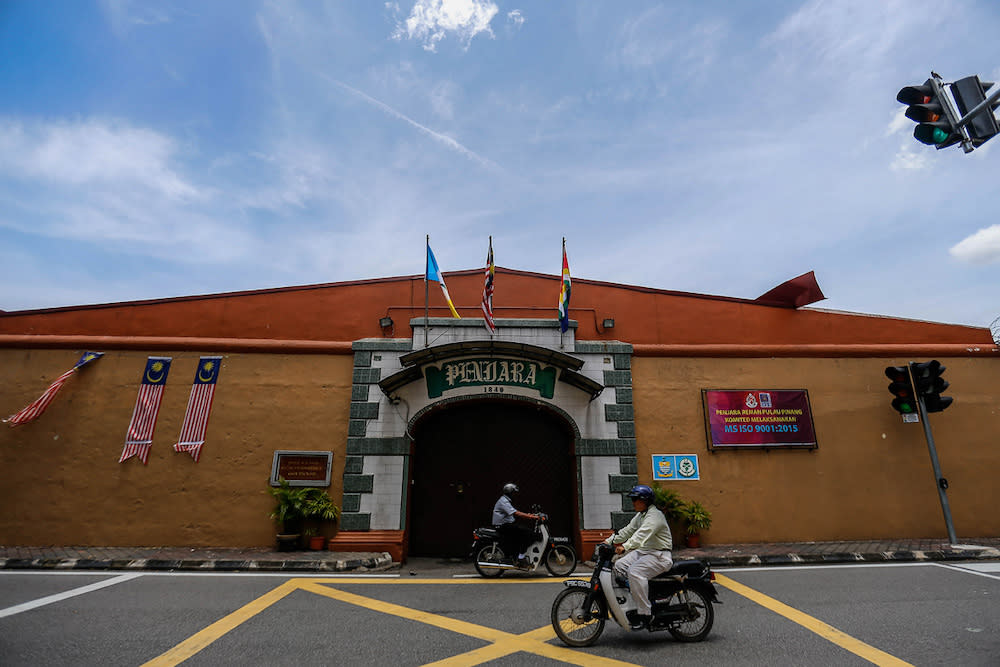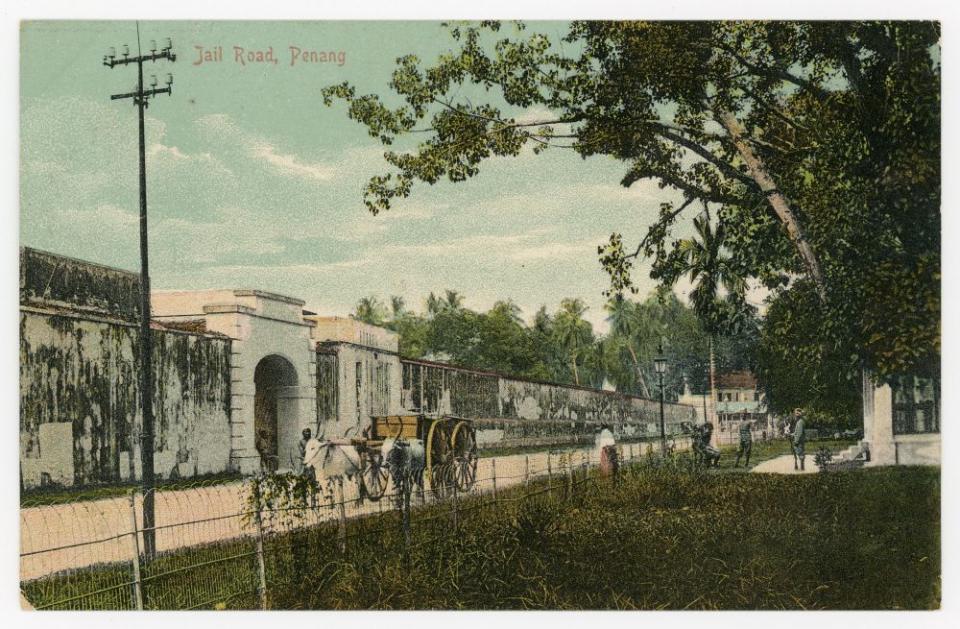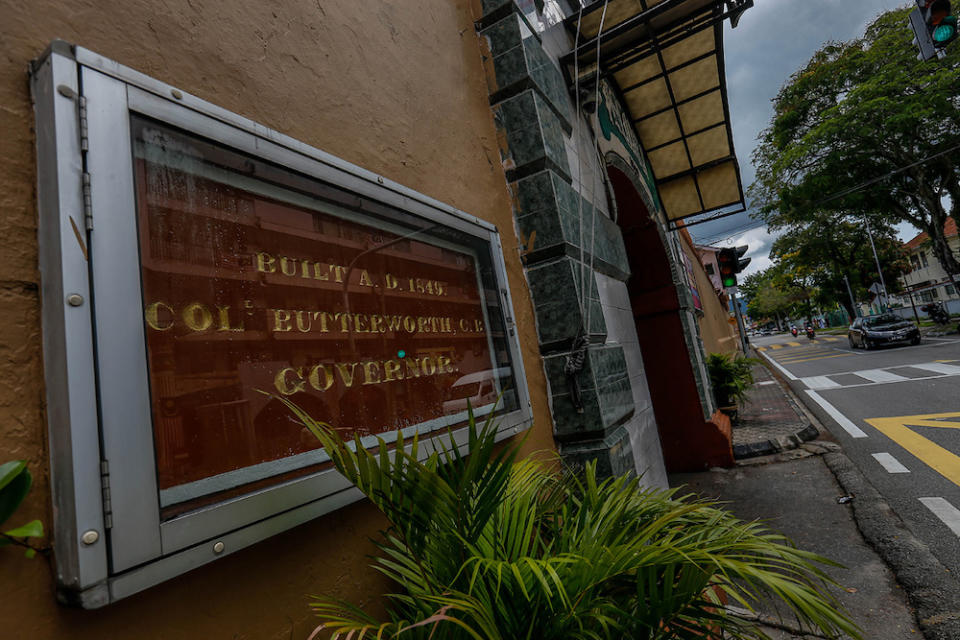Historian finds proof Penang Prison is the oldest British-built jail in Malaya

GEORGE TOWN, Sept 29 — Sticking out like a sore thumb at the corner of Beach Street and Acheh Street is a four-storey shophouse that towers incongruously over the row of double-storey terrace shophouses.
While it is currently in use by a trading company, this building once housed criminals and debtors more than 200 years ago.
According to historian Marcus Langdon, the "Plan of George Town in 1803" by Sir George Leith indicated that “a large airy commodious building” was purchased for use as a jail at the south-west corner of Beach and Acheen Streets.
“The building was used as a jail for 10 years before they built a new one and moved the prisoners to the current Penang Prison which was constructed in 1813,” Langdon told Malay Mail.
A portion of the original building used as a jail in the inner city still remains today.
Records show that the upper storey of the building was in “ruinous condition” so it was recommended to be torn down.
But when wealthy Acehnese merchant Tengku Syed Hussain Al-Aidid bought the building in 1813, he added three more storeys.
Langdon said the ground floor portion of the building still carries the tell-tale signs of its past with small, high-set windows and thickened walls.
Penang Prison circa 1813

Though a plaque on the main wall of the current Penang Prison states it was built in 1849 under the governorship of Colonel William John Butterworth, records unearthed by Langdon show otherwise.
The Australian trawled through thousands of pages of council records kept by the East India Company to come up with proof that the prison was built way before 1849.
Records of one of the council proceedings show that on January 22, 1813 a contractor, Lowe Ammee, won a tender to convert newly-built artillery barracks outside of George Town into a jail.
“A report following completion of the work confirms that it was located on the site of today’s jail near the general hospital,” Langdon said.
Langdon said 1849 was the year that additional buildings adjoining the jail were constructed.
“It is, however, very clear that the original jail was not demolished, that an additional building was constructed... expanding the original jail,” he said.
The new section was likely to have been constructed between the old jail and Jalan Utama.
Langdon had looked closely at the jail walls and signs of the expansion can be seen where different sized bricks were used for the old and new buildings.
The new jail next to the hospital was completed within the same year it was contracted and prisoners from the jail on the corner of Beach and Acheen Streets were transferred there in October 1813.
“The preceding history of the Penang jail should lay to rest any doubts that it is the oldest British-built jail in Malaya,” Langdon said.
He said little is known about the history of the jail which is still located on the same site it was built back in 1813.
“Together with the nearby Penang hospital, the jail today forms part of a highly significant historic precinct with usage dating back over 200 years,” he said.
The Penang Road jail

Interestingly, before the construction of the 1813 jail at the barracks, there was an attempt to build a jail along Penang Road where the current Penang police headquarters is located.
The prison at the corner of Beach and Acheen Streets was found to be unfit for the purpose of confining debtors or those convicted of other crimes.
According to records, a jury was tasked with inspecting the premises and it found the premises to be ”in a state of such decay and the walls so slightly constructed, as renders it by no means a secure place of confinement.”
A committee was appointed and on January 28, 1809, recommended that a new jail be built at a site on Penang Road, just across from Chulia Street.
Civil engineer Captain Thomas Robertson was tasked with preparing plans to build a new jail at this site.
It had to be large enough to confine debtors, convicts and also a House of Correction for criminals of minor offences.
Just before the construction started in April 1809, fire destroyed the Golundauze Lines (barracks for sepoys who were trained to use heavy guns) further south along Penang Road, where the current Penang police headquarters is located.
It was then agreed that the jail be built on the Golundauze Lines site and Robertson soon started construction work.
The new jail on Penang Road was completed but it was found to be severely defective as there were serious cracks in the building and parts of it had sunk.
At that time, the jail was still not in use and another engineer, Major William Farquhar, who was in Penang on a brief visit, found the whole building to be defective and recommended that it be demolished.
Jail for debtors and minor offences
In those days, the jail was not only to imprison those convicted of crimes but also debtors — people who failed to pay up their debts.
“The hard-core criminal element was, however, a minority; by far the greatest number of prisoners were being held for non-payment of debt or petty offences,” Langdon noted.
Debtors were often separated from other criminals at that time and much attention was also given to the safety and health of the inmates when the British considered various sites for the construction of the jail.
There was a House of Correction that was usually located in old godowns and separate from the jail prior to 1849. It was usually meant for those who had committed minor offences.
The full history of the jails in Penang that started with a timber and attap shack built by Francis Light in late 1787 to the construction of the current jail in 1813 will be in Langdon’s third book on Penang’s history.
Langdon has written two others titled Penang: The Fourth Presidency of India, 1805-1830 Volume I and II.
He is now working on the third volume that will detail the history of the hospital, the aqueduct story of getting a water supply to George Town, the jetties before Swettenham Pier was built, the early newspapers in Penang, the formation of the legal system of Malaya that started in Penang and the final chapter, the history of the Penang jails.
“I hope to get it published around the end of the year,” he said.
Langdon has spent the past two decades researching the history of Penang through archives and records, a large portion of which are in Monash University in Australia.
His books tell the history of the first 50 years of Penang from 1786, concentrating on the presidency period between the years 1805 and 1830, pieced together from records of meetings, council proceedings and news he found for that period.
Langdon’s books are available at major bookstores or entrepotpublishing.com.
Related Articles Ignoring police, Puteri Umno leader insists Penang rampage due to religious slurs Penang City Council to roll out e-scooters for public use in pilot project In Penang, roadshows in malls to explain 2020 assessment rate review



